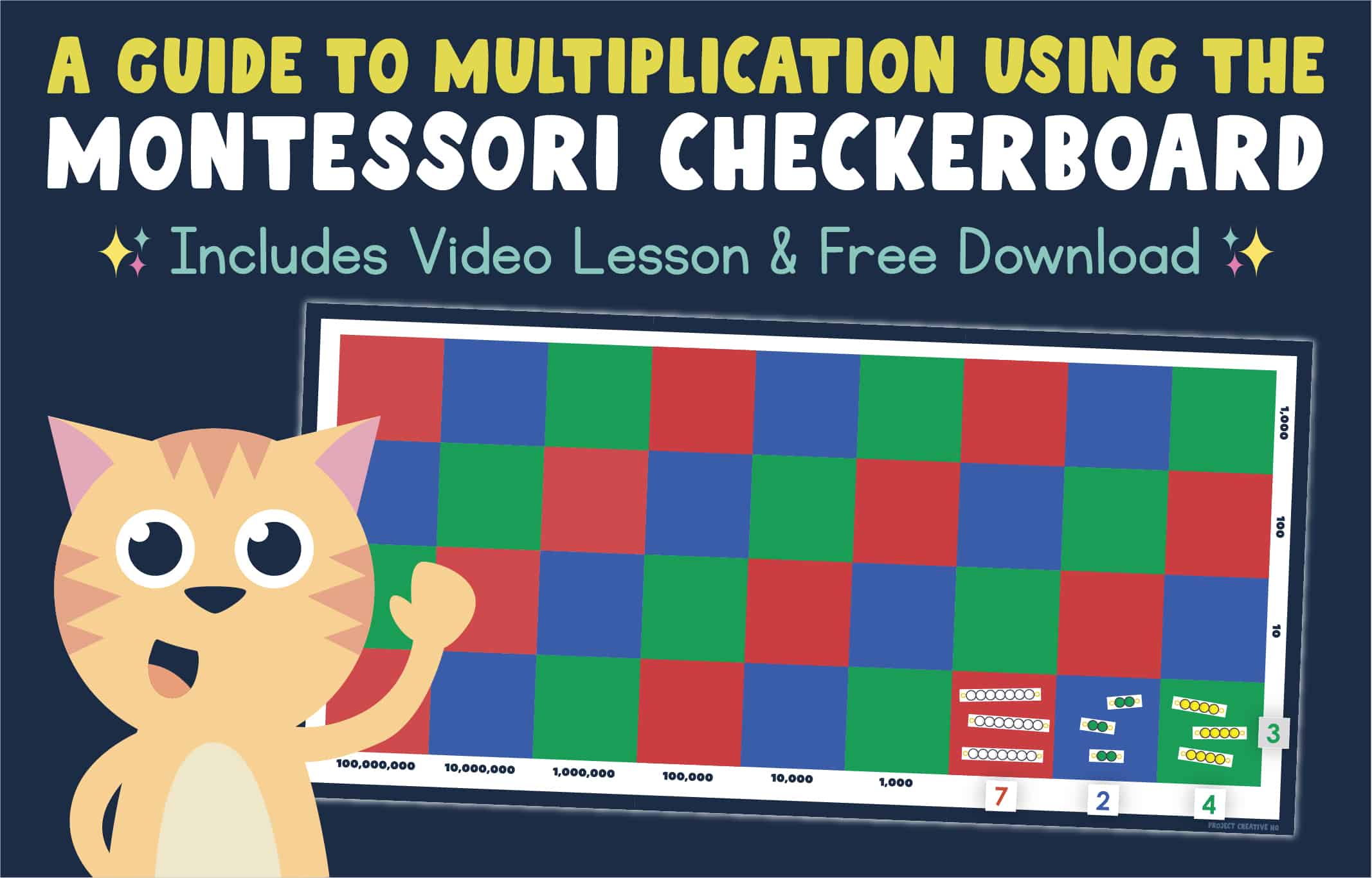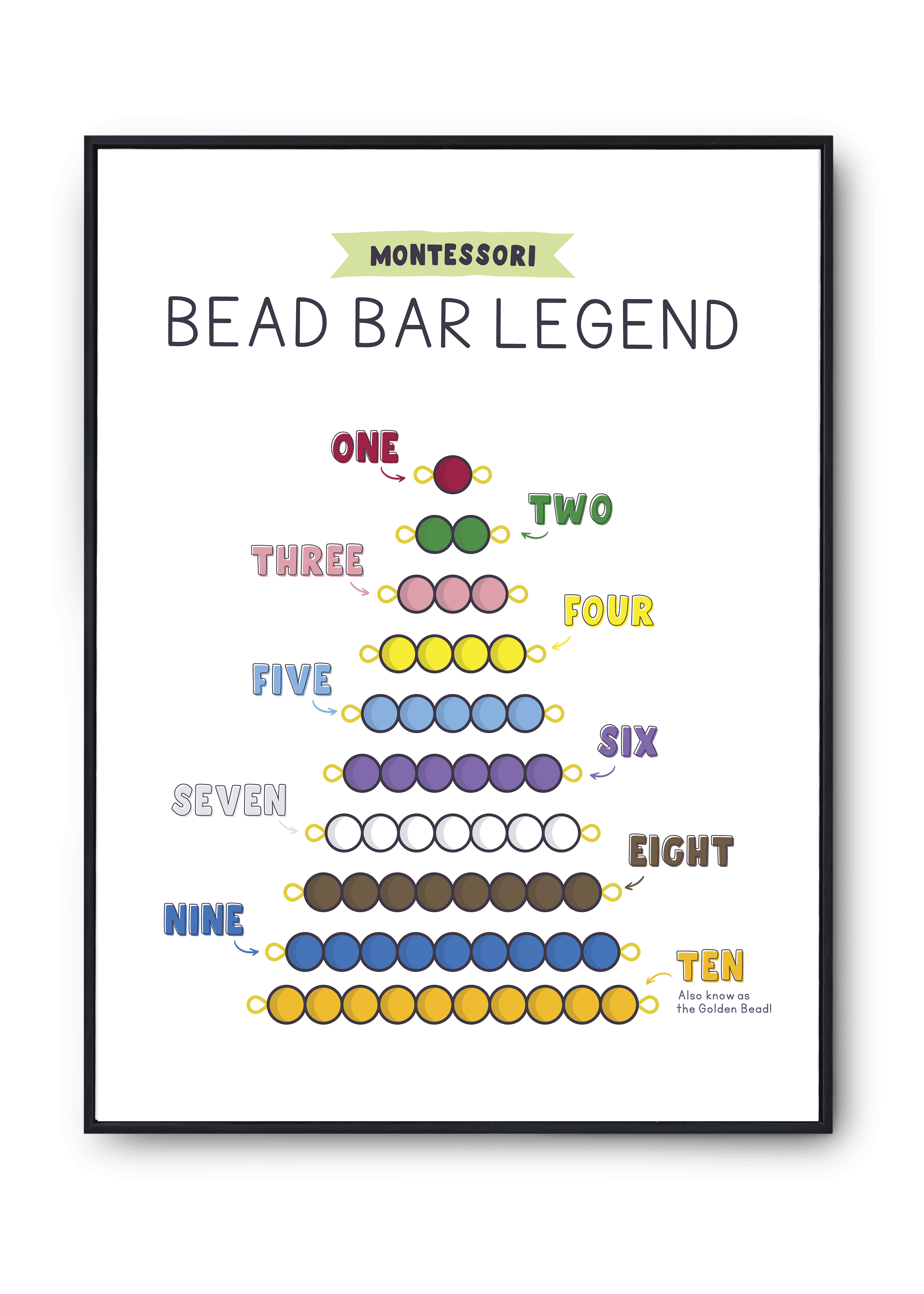Montessori Checkerboard: A Guide to Multiplication (+ Video Presentation)
Are you looking for some guidance on how to work with the Montessori checkerboard for multiplication?
Maybe you’re looking for more information about how this wonderful math material can help the elementary learner(s) in your life understand what multiplication is.
Perhaps you’re interested in how to teach the concept of multiplication to a grade 1 because they are showing a keen interest, a grade 3 who is struggling to grasp the concept or even a grade 5 student in need of a review of how it works.
Or maybe your child is in the second plane of development at a Montessori school and they are really excited to talk about the checkerboard so you need some background information so that you can engage enthusiastically in conversations with them about it.
Regardless of why you’re here, we’re here to tell you that you’re in the right place!
This article includes:
📽️ A video featuring me, teacher Donna, walking through multiplication questions using single-digit and double-digit multipliers on our printed Montessori Checkerboard.
It also includes detailed information about:
✖️ The parts of a multiplication equation;
🏁 The parts of the Montessori checkerboard;
✨ Prerequisites for using the Checkerboard;
👍 Benefits of this material;
🔢 Uses in Lower Elementary, Upper Elementary, and even at home!
💡Be sure to join our Newsletter to get your FREE Set of
Place Value Command Cards!
Math Materials in the Montessori Classroom
One of the major differences between traditional and Montessori schooling is the use of materials to guide the student’s learning process.
Dr. Montessori believed that “What the hand does, the mind remembers.” To reinforce this, she developed all sorts of amazing materials that allow students to experience their learning with their hands.
In math, Montessori elementary students use materials such as blocks and beads to connect with the numbers they are working with as opposed to just seeing numbers represented on paper. They get to physically experience their learning.
Think about seeing the number three written on paper versus being able to touch three apples. There’s something tangible about seeing and feeling the number of apples that gives a deeper meaning to what three is as opposed to just the written digit that represents three.
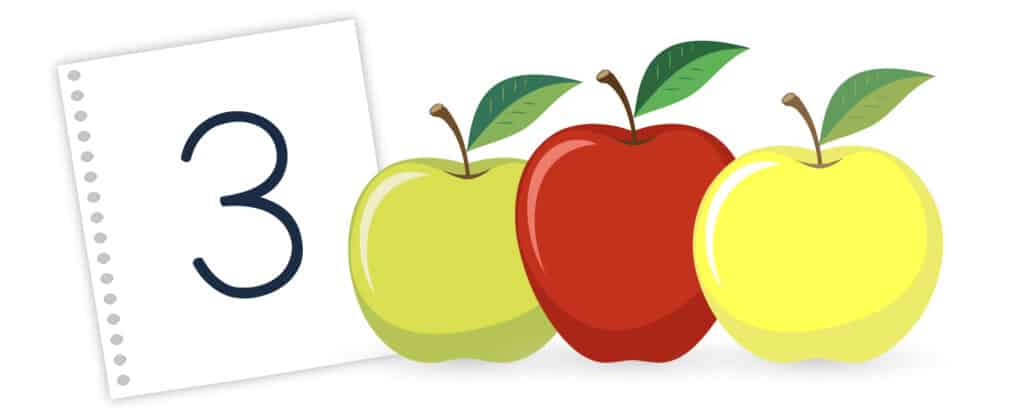
Math materials such as the golden bead material, stamp game, fraction insets, as well as racks and tubes help students truly see and feel what they are doing in math.
This hands-on approach to learning allows students to connect deeply with what they are working on. That’s so Montessori!
➗➗➗
Expand your understanding of the Montessori racks and tubes material with these informative articles that include video demonstrations of division with a single-digit divisor as well as a double-digit divisor.
➗➗➗
The Montessori Checkerboard is a Magical Teaching Tool
There’s something magical about having a student handle the bead bars, move them around the checkerboard, and experience numbers multiplying with their own hands that gives them a deeper understanding of the multiplication process, or what it means to multiply numbers.
The Montessori checkerboard draws children in with its size and familiar colour scheme and provides them with a chance to actually work through a question in both a visual and tactile way. They are experiencing this abstract math concept with their senses giving them a deeper understanding.
When students complete a question they feel a sense of accomplishment, and maybe even pride in their work with numbers. That in itself is magical.
What Exactly is the Montessori Checkerboard (Chequerboard)?
Simply put, the Montessori checkerboard, sometimes spelled chequerboard, is a Montessori math material typically introduced in the early elementary years and revisited over the years as needed.
Like all Montessori math materials, the Checkerboard builds on the practice of using physical materials to teach abstract concepts such as skip counting as well as identifying number families, but one of the most popular uses for this material is to teach multiplication.
Children can often be found using the checkerboard to solve short and long multiplication questions in math.
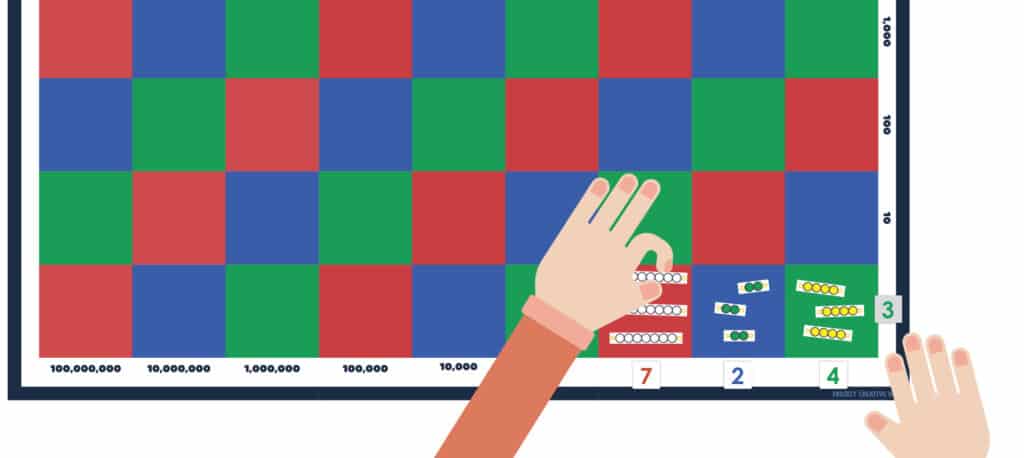
The way that this material was designed allows students to move along the passage of abstraction at their own pace.
Because the child uses bead bars (What’s a bead bar you ask? Keep reading!), there is no need to have multiplication facts committed to memory. Instead, the child is able to practice skip counting while using the bead bars.
With increased use, the chances are that math facts will be absorbed and put into their memory organically.
✴️ It should be noted that this is the opposite of how multiplication is taught in traditional schools.
Conventional wisdom says a child may not do multi-digit multiplication without memorizing the multiplication tables. But that’s not the case when Montessori materials are there to guide the process.
Click to read about more differences between Montessori and traditional schooling.
More About the Montessori Checkerboard
This is one large math material! Students really have to have developed physically to carry it.
And it has lots of parts, too. Students must return to the shelf to get the bead bar box and number tiles to be fully equipped to practice multiplication on the checkerboard. Then they have to put everything away when they are done.
This material is a big deal and teaches more than just math skills! Students learn about body awareness and responsibility as they gather, practice, and then put back the checkerboard math material.
Students must be ready on many different levels for the skills and accountability needed to be successful with the checkerboard. The child in the second plane of development, the elementary child, is ready for this task!
How Does the Montessori Checkerboard Work?
We created a video that will walk you through how the checkerboard works. This video also provides a lot of information about the parts of the checkerboard.
Be sure to keep reading to see how this math material helps students – and educators – solidify their understanding of multiplication.
If you are looking for a way to add more excitement and concrete learning experiences to your elementary math lessons, then consider using the Montessori checkerboard to teach multiplication, even if you’re not in a Montessori classroom.
Video Presentation of the Montessori Checkerboard in Action
As promised, here’s our multiplication video for kids! This presentation outlines how to do multiplication on the Montessori checkerboard with a single-digit multiplier as well as a double-digit multiplier.
Follow along to solidify your understanding of this material and save this video so you can share it with your students, your children, and even your colleagues!
If you don’t have any Checkerboard experience or have never worked with bead bars, we would suggest reading the Parts of the Montessori Checkerboard section below before watching the video to familiarize yourself with this math material.
And keep reading to learn even more about the Montessori checkerboard, its parts, uses in a Montessori Classroom, prerequisites, and its benefits at home or in the classroom!
Using the Checkerboard with Your Elementary Students
As you can see in the video, the Montessori checkerboard is a great math tool for elementary students to learn multiplication. It’s also a great way to challenge young learners to do advanced work with big numbers.
Here is a simple outline of how to use this material as a teaching tool with your elementary students.
- Invite a small group of students to explore multiplication using the checkerboard math material.
- Introduce the checkerboard and ask them what they think of it.
- Point out the similar colour-coded scheme the checkerboard has with other Montessori math materials that students have previously used, like the stamp game and the large bead frame for instance.
- Engage students in a warm-up activity by building numbers on the board using bead bars. Try our FREE Place Value Command Cards!
- Identify the parts of a multiplication question on the checkerboard.
- Practice representing and reading the multiplicand and multiplier on the checkerboard.
- Show students how to use the bead bars on the checkerboard to solve single-digit multiplier multiplication questions.
- Provide students with questions, self-correcting command cards, or even math games with dice as follow-up work so they can continue their practice with the checkerboard independently or in small groups.
- Introduce multiplication with a double-digit multiplier when they’re ready!
- Always commend your students for their hard work and acknowledge their efforts!
Parts of a Multiplication Equation
When elementary math students start tackling multiplication, it’s important they know and understand what exactly is being asked of them in a question.
For this reason, elementary students should be familiar with the three parts that make up a multiplication question: the multiplicand, the multiplier, and the product. Knowing these three components will help them engage more openly and face their multiplication problems with confidence.

The core parts of a multiplication equation include:
✖ The Multiplicand: The number that is being multiplied by another number;
✖ The Multiplier: The number of times the multiplicand is taken; the number doing the multiplying;
✖ The Product: The result you get when numbers are multiplied together; basically a fancy name for the answer;
✖ And don’t forget the math symbols – a multiplication sign and the equals sign!
💬 💬 💬
Speaking of Parts. . .
Have you read our comprehensive guide on
The 8 Parts of Speech for Kids?
It’s a must-read for all elementary educators!
💬 💬 💬
Parts of the Montessori Checkerboard for Multiplication
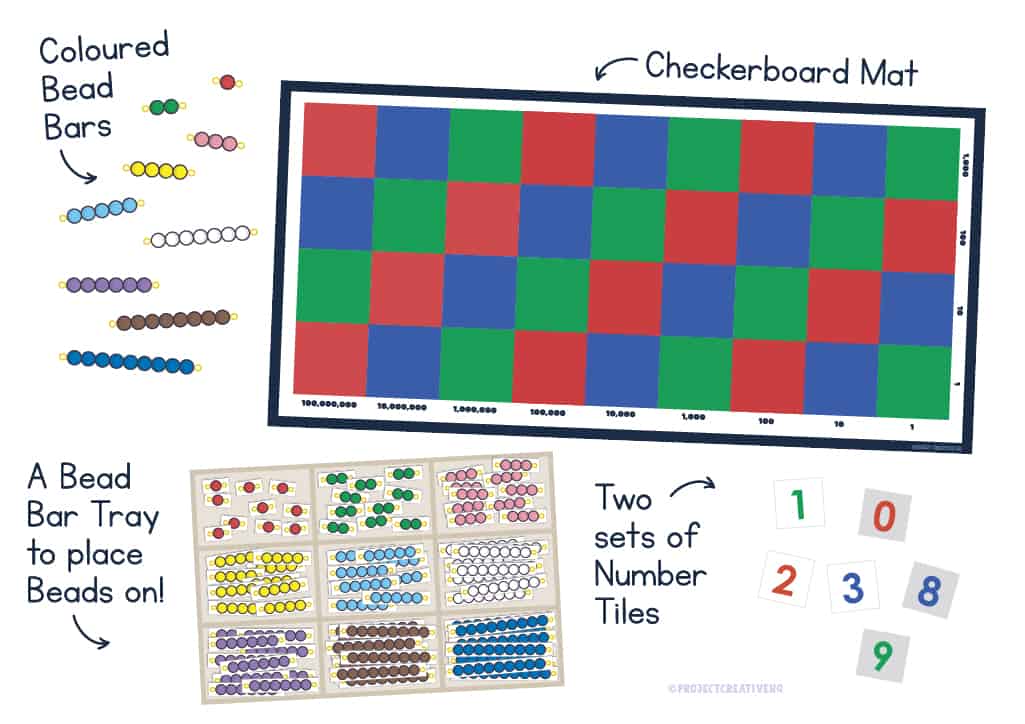
When using the Montessori Checkerboard in your lesson plan to teach multiplication you’ll need the following parts:
🟥 The Checkerboard Mat
🟢 The colour-coded bead bars 1 – 9 along with the bead bar tray
2️⃣ White and grey number tiles 1 – 9
🔢 Command cards, some prepared equations, or student-created questions
Read below to learn more about each of these important pieces that are necessary for success with this fun way to teach multiplication.
The Board
Traditionally made of wood, the original Montessori checkerboard is a large and cumbersome material.
The great thing is that now you can find this math material in many forms:
🖨️ printable checkerboards on paper,
🧵 checkerboards are also sewn using fabric, and even
💻 digital forms of the checkerboard exist.
Regardless of how it is made, the Montessori checkerboard should have four rows and nine columns of squares alternating in colour with green, blue, and red.
The smallest number family is represented by a green square at the bottom right corner of the board. The unit family is the starting point for numbers on this board.
Moving horizontally across the checkerboard from right to left starting with the unit, you’ll see that the number families increase all the way up to the red hundred million family square. The individual horizontal rows not only represent place value but also represent the partial products of multi-digit multiplication.
If you move vertically up the board starting a the green unit square you will see other number families above – a blue square for the family of ten, a red square for the hundreds family, and a green square for the thousands family.
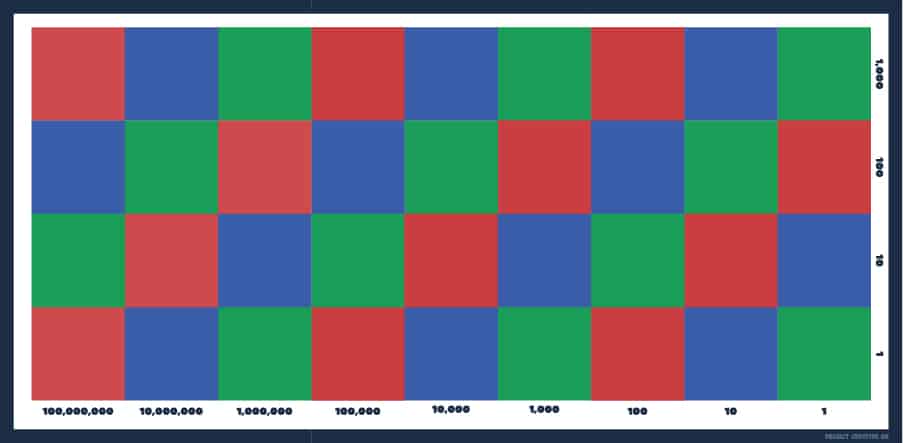
It is also important to note that squares that connect diagonally and share the same colour are part of the same number family. This is part of the magic of multi-digit multiplier multiplication on the checkerboard! See this in the video at the 33:17 min mark.
Students are familiar with the gree-blue-red colour scheme from working with previous Montessori math materials. This provides a sense of comfort and even confidence because they already know something about the materials they are working with.
Montessori refers to this colour scheme as ‘hierarchical colours‘:
🟩 green = units
🟦 blue = tens
🟥 red = hundreds
The nine horizontal squares on the checkerboard are made up of three families, each having its own units, tens, and hundreds:
🟩 the ones family (1/10/100);
🟦 the thousands family (1,000/10,000/100,000),
🟥 the millions family (1,000,000/10,000,000/100,000,000).
To be exact, there are thirty-six colour-coded squares on the Montessori checkerboard, each designating a number family from units all the way up to a hundred billion.
Like I said earlier, big work can be done on this material!
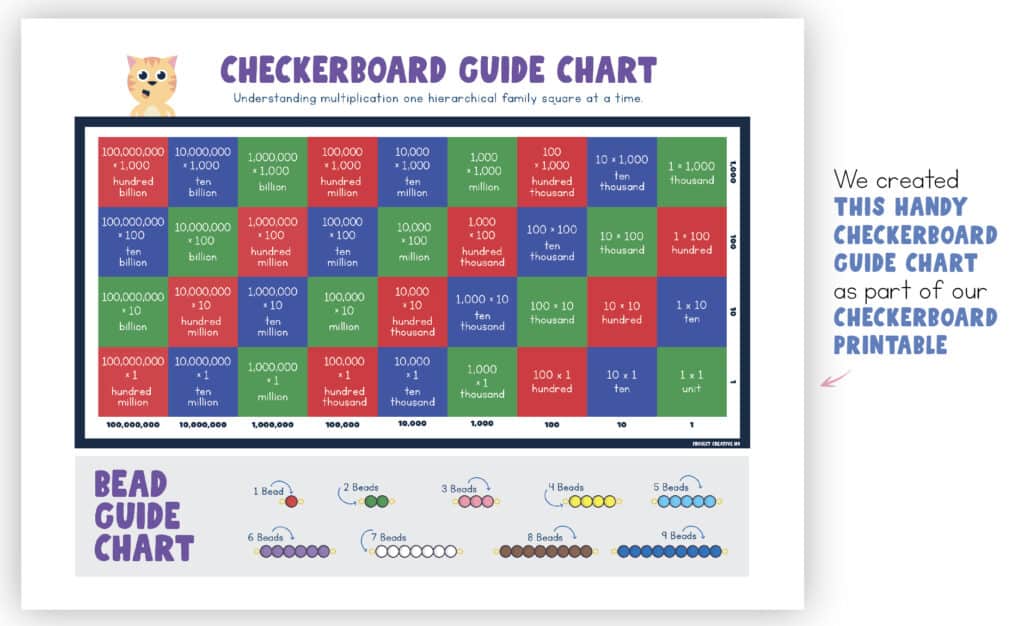
Find it as part of our Checkerboard printable on our Etsy and TPT Shop
The Colour-Coded Bead Bars
Traditionally made of plastic or nylon on stainless steel or copper wire, you can also find printable bead bars on paper.
In Montessori Math, the bead bars have specific colours for the numbers 1 through 9. Learners become familiar with these colours and can identify numbers by the number of beads on the bar as well as their colour.
Colour-coded Montessori bead bars are used with the Montessori checkerboard to represent partial products as well as the final product, or answer, of a multiplication question inside the number family squares.

Bead bars are an important part of the Montessori math curriculum. They are great for reinforcing number recognition and helpful when practicing skip counting.
On top of that, the bead bars make for wonderful wall decor! Check out our educational, fun, and helpful poster (or use it as a handout!) representing the bead bars.
The Number Tiles
Traditionally made of wood or plastic, numerical placeholder squares, known as number tiles, are also needed for multiplication on the checkerboard. They represent the numbers to be multiplied in a multiplication equation.
White tiles are used to represent the multiplicand horizontally along the bottom of the checkerboard, grey tiles are used to represent the multiplier vertically on the right side of the board.
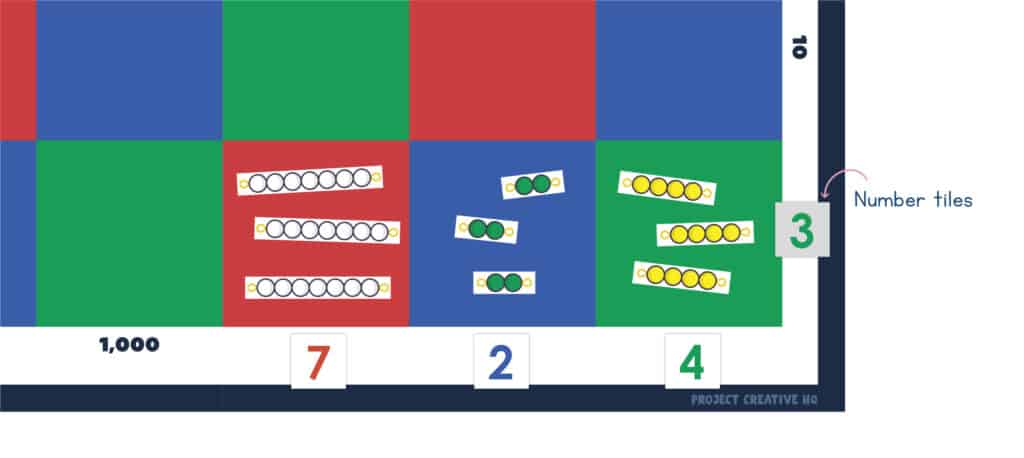
Note that the number tiles for both the multiplicand and the multiplier are also colour-coded (green, blue, red) guiding young mathematicians to understand which digits belong to which number family.
Children have to match their number tile digit and colour to the appropriate number family square on the checkerboard. So much learning with this one Montessori math material.
BONUS – The Command Cards
Students benefit from using multiplication command cards or creating their own multiplication question cards to solve using this math material.
Now that we know the parts of the Montessori checkerboard, let’s take a look at when this magnificent math material should be used by elementary students to learn how to multiply.
Get your FREE Place Value Command Cards by joining our Newsletter today!
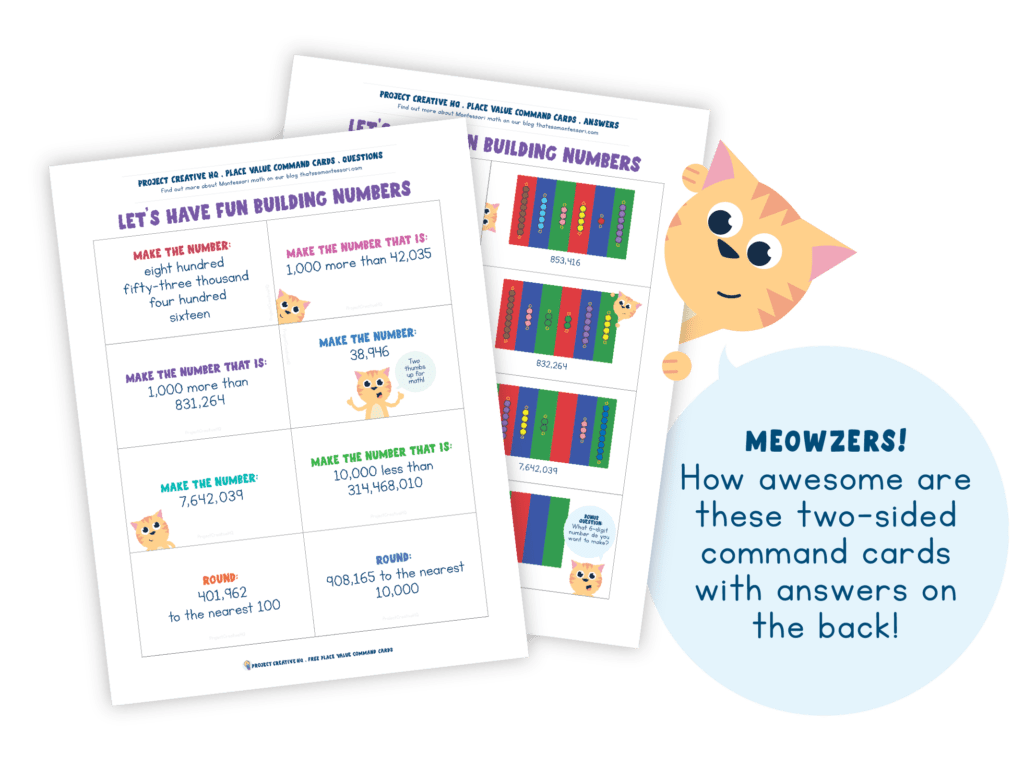
Prerequisites for Using the Montessori Checkerboard
Whatever level it is being used at, it serves the same purpose. The checkerboard is a math material mainly used to teach long and short multiplication.
Before using the checkerboard, the student should have been introduced to the 5th Great Lesson – the story of numbers. It is also important that the child has some knowledge of the four basic math operations as well as an understanding of the hierarchical Montessori materials and their colour-coded patterns.
Using Montessori materials such as the golden bead material, the bead cabinet, basic operation finger charts, bead frames, and the Montessori hierarchical materials prepare learners for the checkerboard.
The Montessori checkerboard reinforces those concepts with a new way of presenting the information, while at the same time allowing the child to increase their knowledge and skill level in math. That’s so Montessori!
Benefits of Using the Montessori Checkerboard
There are so many benefits to using the Montessori checkerboard to teach important math skills such as multiplication to elementary students.
Here are just a few benefits:
✅ The checkerboard familiarizes students with combining number quantities.
✅ This material reinforces math concepts learned and practiced using other Montessori math materials.
✅ Children use their hands to connect their brains to an abstract math concept.
✅ It helps students experience the geometrical nature of multiplication in the decimal system and prepares them for squaring.
✅ This math material allows kids to work in small groups on huge problems, both tendencies of the elementary child.
✅ It provides children the opportunity to explore and discover, which helps create a growth mindset and helps them become life-long learners.
✅ The Montessori checkerboard promotes experiential and sensorial learning.
Can you believe that one material used to teach math provides so many benefits? That’s so Montessori!
The Checkerboard as a Lower Elementary Math Material
It’s a lot of work just to set up this Montessori math material! The board is big, heavy, and awkward to handle – the perfect challenge for the developing stature of lower elementary students.
All of the components of this math material take up quite a bit of space. Setting up the checkerboard involves more than just collecting paper and a pencil. For the lower elementary child, it requires involvement from and movement of the entire body.
It also requires a lot of thought, patience, and concentration.
This math material helps develop students’ abstract multiplication skills and leads them toward category multiplication.
For the reasons stated above, many Montessori teachers begin presenting this math material to students as early as first grade and it continues to be used throughout the lower elementary years.
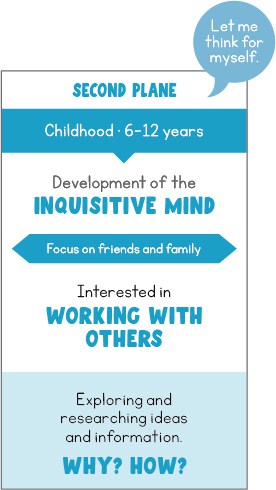
At this age and stage of development, the lower elementary student is curious about and capable of completing complex tasks.
Students in the second plane of development thrive when they are able to take abstract concepts and experience them with their hands. They want to be challenged and they want to solve problems on their own.
This material is so successful at the lower elementary level because it is intriguing, interactive, and engaging. Children are motivated to use the checkerboard because it is big, visually pleasing, and includes many pieces for them to tangibly experience what they are learning.
It’s one of those Montessori materials that has the potential to stop younger students in their tracks. They see some of their classmates using it and are excited to try it as well. You read that right, students actually look forward to learning on the checkerboard.
The checkerboard is a fun and creative way of learning and practicing multiplication using multiple digits. It is appealing to young hands and connects learners with how multiplication works.
The Montessori Checkerboard Continues in Upper Elementary
While the checkerboard Montessori math material is typically introduced, practiced, and even mastered in lower elementary, it can be seen in the upper elementary environment.
Since students continue to explore multiplication all through upper elementary, having this material on hand provides students with familiarity and something to refer back to when times tables get tough (see what I did there!?!?!). 😹😹😹

The checkerboard Montessori math material also serves as the precursor to the Montessori decimal checkerboard introduced in upper elementary. Similar in form and function, the decimal checkerboard allows students to learn even more about number families and place values by multiplying decimal numbers.
So while the checkerboard is often introduced and used in the lower elementary environment, it functions as an important bridge to continuing their study of numbers and understanding of multiplication.
The Checkerboard Can Work for Non-Montessori Students
Join me here for a quick trip down memory lane to see how introducing the Montessori checkerboard at home can actually work with a student who is not in a Montessori learning environment.
When she was in grade 3 my stepdaughter, Taylor, struggled to grasp the abstract idea of multiplication.
I promise I tried very hard to leave my ‘teacher voice’ at school, but we all know that’s no easy task. It often crept into our home life.
When Taylor voiced that she needed some help understanding multiplication, I started looking at creative ways to get her to practice her math facts so they would stick.
We tried every one of these fun math activities, as well as those pictured on Pinterest, and even flashcards before bed. We had some fun exploring mathematical learning alternatives, but I started to notice that she still wasn’t getting how multiplication worked.
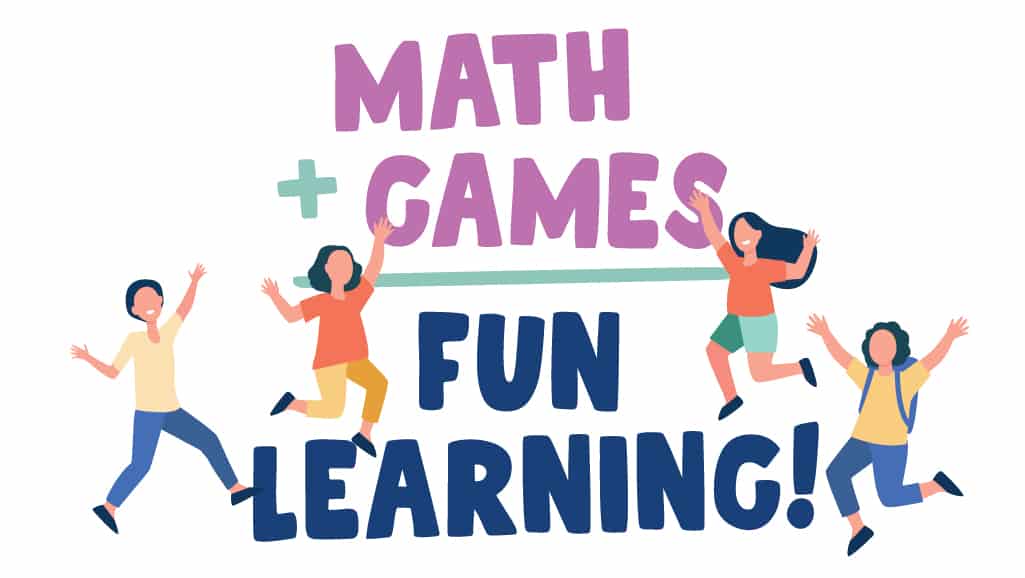
Taylor, now a successful graduate of the traditional school system as well as university, had a little bit of Montessori sprinkled into her upbringing in a variety of ways, so why not include the use of the Montessori checkerboard at home to the list?
The Montessori Checkerboard for the Win
Although the games we were trying were wonderful for practicing math facts, we were essentially working on something so foreign to Taylor. Multiplication was an abstract concept that she hadn’t grasped, and therefore just practicing more questions, or memorizing multiplication facts was meaningless to her.
I knew introducing her to the Montessori checkerboard could really help her see and fully understand the ins and outs of multiplication. I had been implementing Montessori-style approaches to other areas in her home life, so why not math?
And so I started bringing the Montessori checkerboard material home once a week so we could practice. Fun!
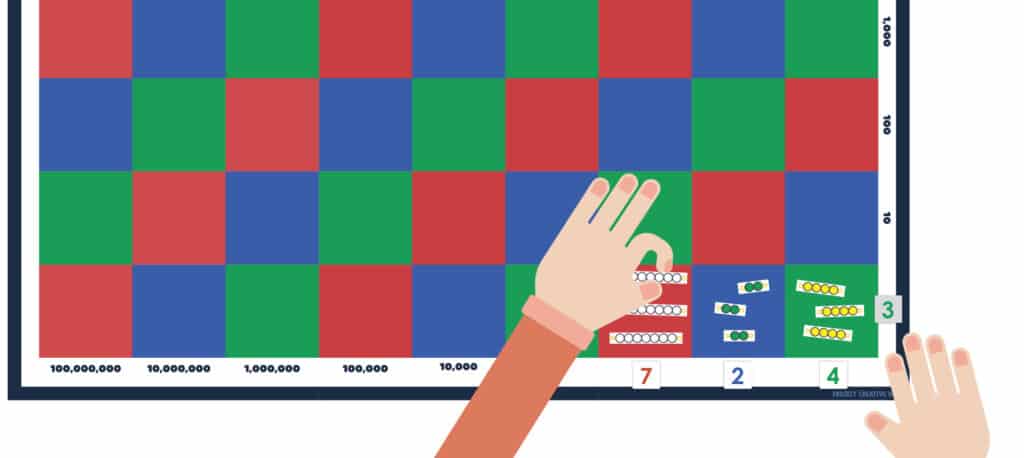
At the age of 8, I taught Taylor about hierarchical number families, how to represent and read numbers on the checkerboard, and how to multiply with bead bars on the board. I was both amazed and not at all surprised at how well she responded to this math material.
Within a month’s time, Taylor’s multiplication skills improved significantly.
Using the Montessori checkerboard allowed her to form a deeper understanding of the concept of multiplication that she was previously struggling with. The best part was that she enjoyed and even looked forward to doing math work on the checkerboard.
Success!
If it worked for her, then it can work for your elementary learners too.
💡 💡 💡
FYI – Math Games Make Learning Fun!
I really enjoyed researching fun math games for Taylor to try out.
Sure, they weren’t all a hit with her, but I think they are helpful in learning.
If you’re looking to add some entertainment to the learning in your classroom,
try some of these math activities for elementary students!
💡 💡 💡
Summary – Montessori Checkerboard: A Guide to Multiplication (+ Video Presentation)
The checkerboard is a Montessori math material that leads to a lot of mathematical learning and discovery. It allows elementary students to work with huge numbers while understanding the concept of multiplication.
Children love using this material because it is visually pleasing and allows them to use their hands to experience the abstract concept of multiplication. The checkerboard can be used to teach skip counting, identify number families, and of course, teach multiplication.
If you are looking for a way to add more excitement and engagement as well as a more clear understanding of multiplication to your elementary math curriculum, then consider using the checkerboard Montessori material to guide your multiplication lessons.


